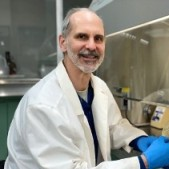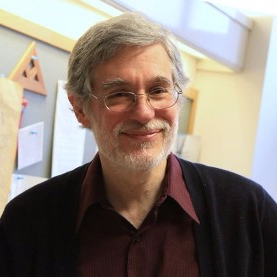Transmembrane and Intracellular Signal Transduction Mechanisms: A Themed Issue in Honor of Professor Jeremy Thorner
A special issue of Biomolecules (ISSN 2218-273X). This special issue belongs to the section "Cellular Biochemistry".
Deadline for manuscript submissions: closed (31 March 2022) | Viewed by 41749
Special Issue Editors
Interests: molecular mechanisms of fungal pathogenesis; fungal cell signaling; fungal morphogenesis; fungal virulence factors; plasma membrane microdomains
2. Department of Molecular Biology, Princeton University, Princeton, NJ 08544, USA
Interests: cell biology in the budding yeast; Saccharomyces cerevisiae; cell and nuclear fusion; regulation of meiosis
Special Issue Information
Dear Colleagues,
Few scientists have made so many seminal contributions to our understanding of transmembrane and intracellular signal transduction mechanisms than Professor Jeremy Thorner. Moreover, few have so artfully exploited the cell biology of the humble of budding yeast to learn so much about how these processes work in all eukaryotic cells, with a broad impact on the mechanisms of disease and the development of novel therapeutic approaches. The scientific world has undergone many changes since 1971, when Jeremy published his first manuscript, but through the years he has steadily been at the forefront of the revolution in basic research studies on many areas of cell signalling.
After earning his PhD from Harvard University in 1972, and a short postdoctoral stint at Stanford, Prof. Thorner began his career as an independent scientist in 1974 as an Assistant Professor at the University of California at Berkeley, where he has remained until retirement in 2020. His early studies on the synthesis and processing of yeast-mating pheromones provided a detailed molecular understanding of how larger proteins could be processed into smaller hormone units and secreted. In the case of alpha factor, his lab showed that it is secreted through the normal secretory pathway, along the way discovering the prototypical eukaryotic prohormone protease, Kex2. In the case of a-factor, the lipopeptide pheromone is secreted through a transmembrane protein pump, identifying a new role for ABC transporters and establishing a paradigm for the role of ABC transporters in antigen presentation. Subsequent studies on the mechanisms of pheromone signalling established many novel mechanisms for the regulation of G-protein coupled receptor signalling and MAP kinase pathways. In particular, his lab elucidated two pathways of negative regulation, identifying the role of the GAP, Sst2, and the regulated endocytosis by the alpha-arrestins. More recently, Prof. Thorner has focused on the mechanisms that regulate lipid signalling and organization, and plasma membrane structure that are critical for cell signalling pathways to function properly. In particular, he has focused on the synthesis and function of phospho-inosotides in regulating several critical pathways.
Prof. Thorner has contributed significantly to the scientific community in many other ways, including serving on numerous grant review panels and on the editorial boards of many scientific journals. He has mentored a large group of successful scientists from his own lab and previously served as a Director of an NIH-sponsored training grant in cellular and molecular biology. In recognition of his achievements, Prof. Thorner has been invited to lecture at conferences around the world and has been elected as a Fellow of several scientific societies, including the American Society for the Advancement Science, the American Academy of Microbiology and the National Academy of Sciences. Given his many contributions, it is fitting that he was recognized with a Lifetime Achievement Award from the Genetics Society of America.
Biomolecules is pleased to host a Special Issue honouring Prof. Jeremy Thorner for his outstanding achievements in basic science and in mentoring an outstanding group of scientists who are continuing to discover novel aspects of cell signalling that will be highlighted in this issue.
Prof. Dr. James Konopka
Prof. Dr. Mark Rose
Guest Editors
Manuscript Submission Information
Manuscripts should be submitted online at www.mdpi.com by registering and logging in to this website. Once you are registered, click here to go to the submission form. Manuscripts can be submitted until the deadline. All submissions that pass pre-check are peer-reviewed. Accepted papers will be published continuously in the journal (as soon as accepted) and will be listed together on the special issue website. Research articles, review articles as well as short communications are invited. For planned papers, a title and short abstract (about 100 words) can be sent to the Editorial Office for announcement on this website.
Submitted manuscripts should not have been published previously, nor be under consideration for publication elsewhere (except conference proceedings papers). All manuscripts are thoroughly refereed through a single-blind peer-review process. A guide for authors and other relevant information for submission of manuscripts is available on the Instructions for Authors page. Biomolecules is an international peer-reviewed open access monthly journal published by MDPI.
Please visit the Instructions for Authors page before submitting a manuscript. The Article Processing Charge (APC) for publication in this open access journal is 2700 CHF (Swiss Francs). Submitted papers should be well formatted and use good English. Authors may use MDPI's English editing service prior to publication or during author revisions.
Benefits of Publishing in a Special Issue
- Ease of navigation: Grouping papers by topic helps scholars navigate broad scope journals more efficiently.
- Greater discoverability: Special Issues support the reach and impact of scientific research. Articles in Special Issues are more discoverable and cited more frequently.
- Expansion of research network: Special Issues facilitate connections among authors, fostering scientific collaborations.
- External promotion: Articles in Special Issues are often promoted through the journal's social media, increasing their visibility.
- e-Book format: Special Issues with more than 10 articles can be published as dedicated e-books, ensuring wide and rapid dissemination.
Further information on MDPI's Special Issue polices can be found here.







